Japan’s Maternal and Child Health Handbooks: Making Waves from Indonesia to the World
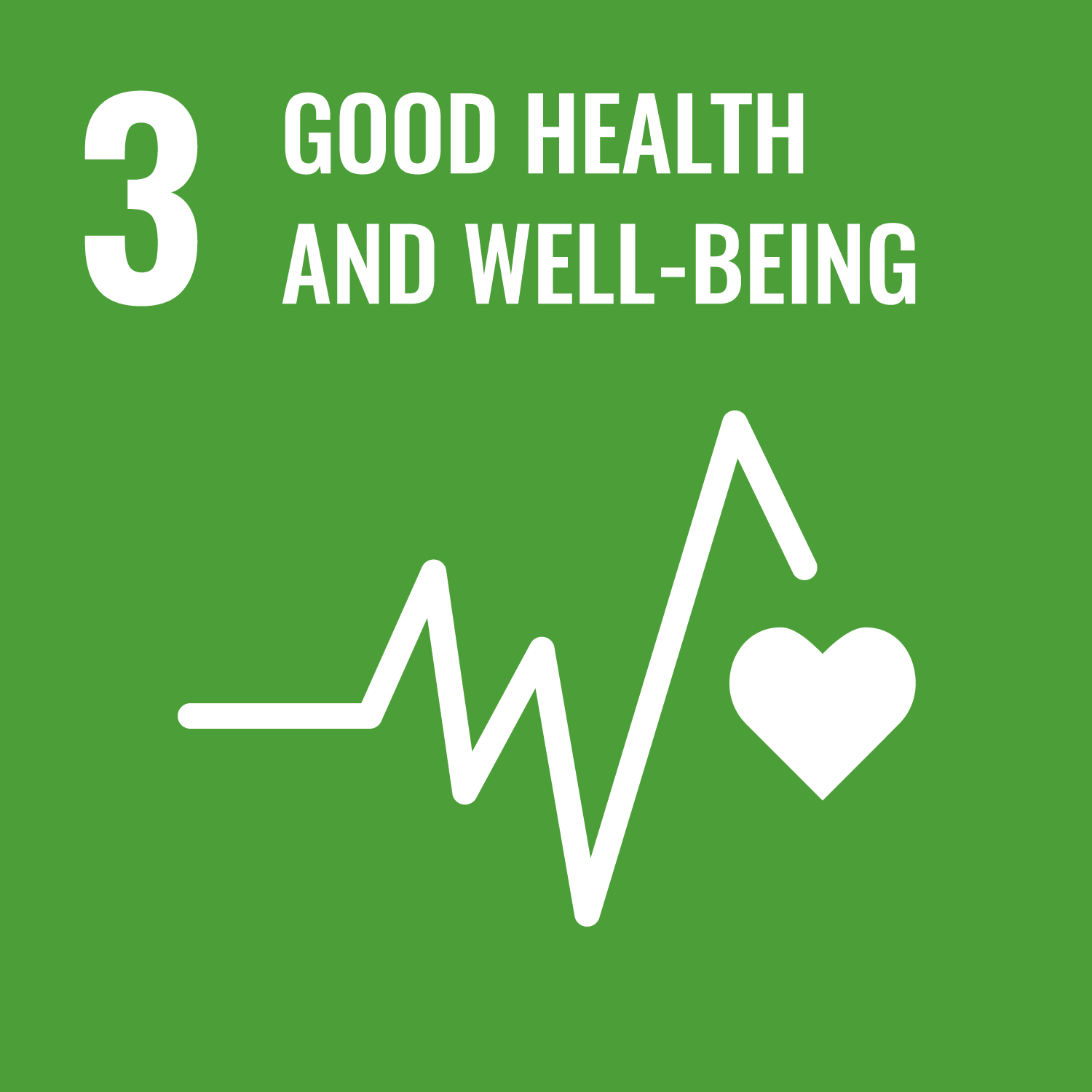
2024.02.15
An unassuming booklet born in Japan shortly after World War II, the Maternal and Child Health (MCH) Handbook contributed to improving children’s health in the ensuing decades. It was the first such joint record book of mother and child health in the world. The MCH Handbook has delivered similar benefits in the approximately 50 countries in which it has been deployed. In 1993, Indonesia became one of the first countries receiving support from JICA to introduce the MCH Handbook, and after a decree by the Minister of Health in 2004, it came into use across the nation. Other countries are now learning from Indonesia’s experience in order to improve their own maternal and child health care systems.
Dr. Kirana Pritasari of the Indonesian Ministry of Health and JICA’s Osaki Keiko, both instrumental in the spread and development of the handbook in Indonesia, discuss 30 years of JICA-Indonesia cooperation, the challenges the project faced, and what lies ahead as it becomes used in ever more countries.
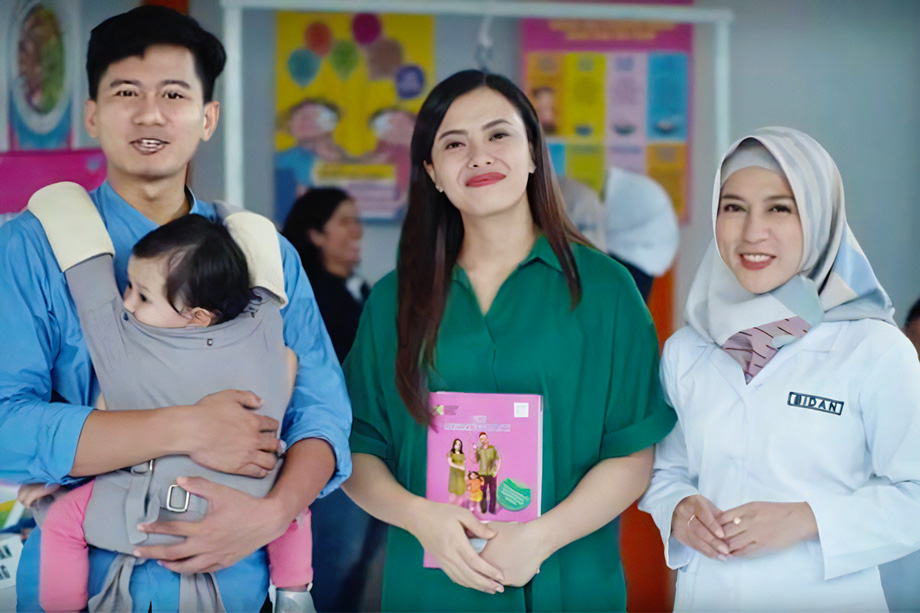
—What was the situation surrounding childbirth and maternal and child health in Indonesia in 1993, when JICA began cooperating in the creation of the MCH Handbook?
Dr. Kirana Pritasari: The first introduction of the handbook was in Salatiga City, Central Java by Dr. Andryansyah Arifin, head of a program of the provincial health office at that time. He had participated in JICA’s training in Japan, and from that experience he initiated the introduction of MCH Handbooks together with JICA experts.
At the time in 1993, that’s the period when we started to deploy village midwives, about 54,000 across the nation, but not yet 100 percent coverage. The maternal mortality rate at that time was about 390 per 100,000 live births, and infant mortality about 57 per 1,000 live births. Compared to countries around Indonesia, like Singapore, Thailand and so on, we had five to ten times higher rates. More than 50 percent of births were not assisted by health professionals; while our immunization coverage was already about 70 percent, one of the more advanced programs in Indonesia.
With JICA’s support, we first created a pilot version that combined various cards that had already existed in Indonesia for recording maternal and child health and development into one, and then a standardized Indonesian MCH Handbook in 1997.
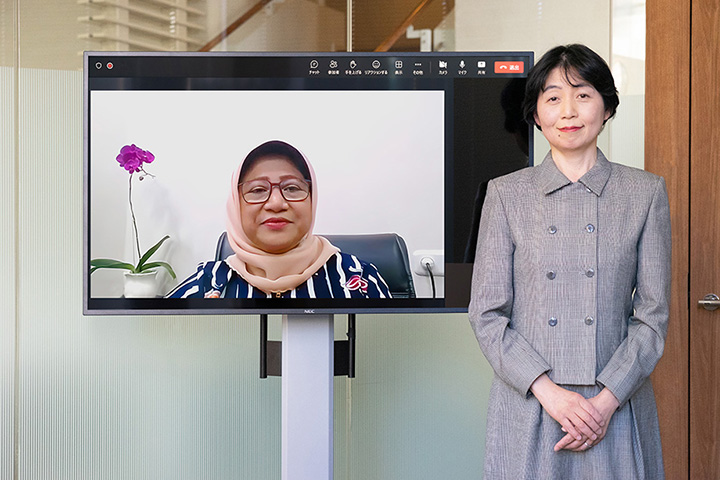
Dr. Kirana Pritasari, former director general for Public Health, Ministry of Health, and Osaki Keiko, senior advisor on health, JICA.
Osaki Keiko: Many might assume that the Indonesian handbook is solely based on the Japanese version, but in fact, it was never a translation. Simply put, it wouldn't work. So, what they did is collected the existing tools—they used to have the immunization card, the maternal health card, the child development card, several cards for the same mother and child—and compiled them into one. Our colleagues took a lot of energy and time to create it so that users and health professionals, whether in urban and rural areas, or on the various islands, felt they had ownership.
Pritasari: We also give the opportunity for the provinces to add their unique local wisdom to the MCH Handbook. For example, they included nutrition guidance on using locally available food, and in very religious provinces they put some quotes from Muslim prayers in the book. Some also want to put a picture of the local landscape and people on the cover of the book so they can show that it belongs to that province.
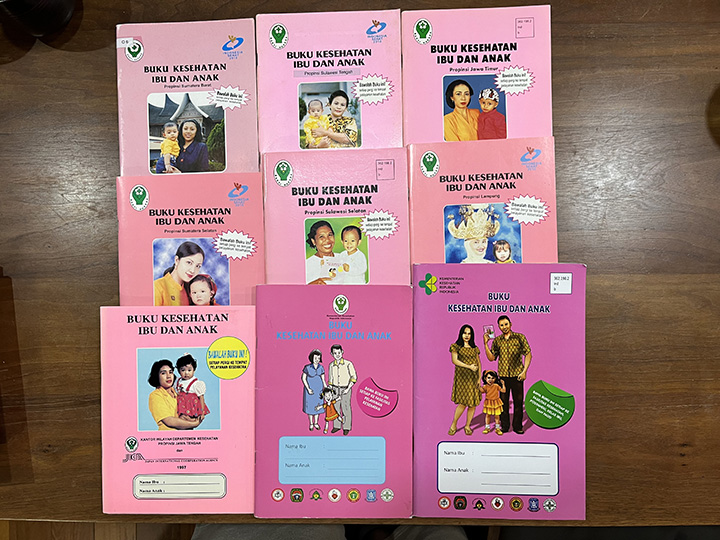
Various versions of the MCH Handbook created in Indonesia.
—
What were some of the most difficult aspects of your efforts before the ministerial decree was issued in 2004 to encourage the use of MCH Handbooks, as well as the efforts that were necessary after the issuance of decree?
Pritasari: From 1998 to 2000, Indonesia changed its health policy and started a decentralized system. So, during the scaling up phase, we also needed to convince the provincial health offices and district health offices that this program not only belonged to the central but also to local government. The challenge before we had the ministerial decree was to convince all program managers at the central government that we need to have this one, integrated record for mother and child.
Until the time of the ministerial decree, JICA supported the Ministry of Health to print the book. And after the ministerial decree we tried to expand the implementation nationwide but we couldn’t financially support the printing of the handbook for the whole country. We had to persuade provinces and districts that they needed to take the responsibility for printing the book.
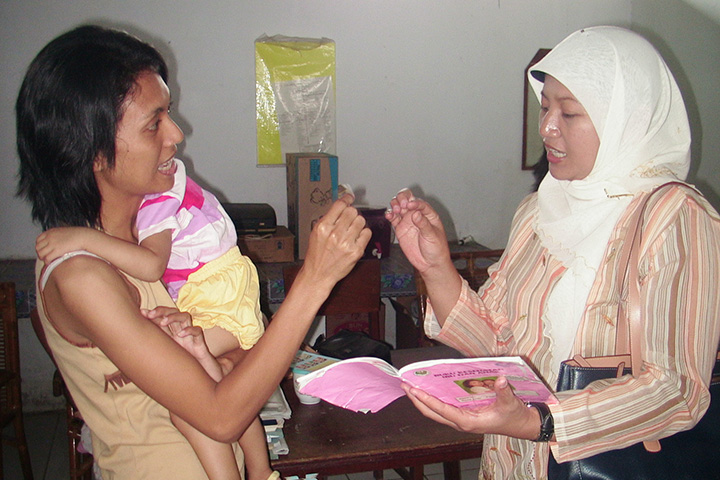
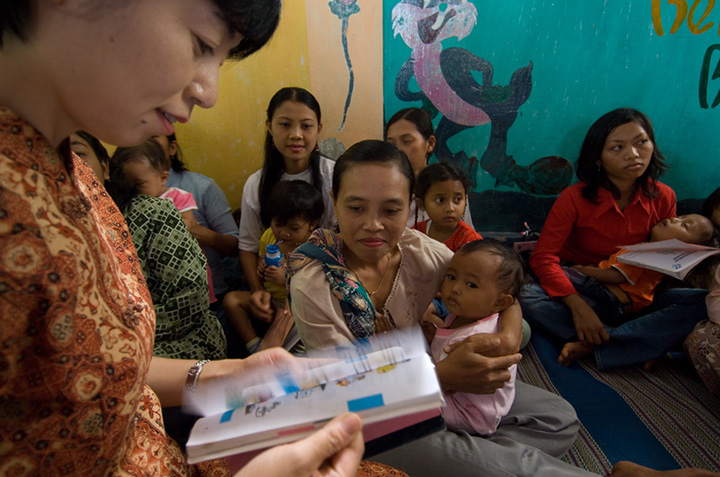
Dr. Pritasari and Osaki, driven by a shared vision, have dedicated themselves to enhancing maternal and child health in Indonesia for over 20 years. (Right photo: JICA/Imamura Kenshiro)
One of the problems after the ministerial decree was how to monitor the utilization of the MCH, because Indonesia is very big. We had 33 provinces and more than 500 districts and municipalities.*1 We collaborate with BPS Statistics Indonesia, which carries out a national survey every five years. They evaluate the pregnancy coverage, who received antenatal care, immunization and so on. So we ask them to monitor how many mothers receive and use this information handbook and can compare across the provinces and districts.
We could see how the percentage of births assisted by a health professional had increased. At the time of the ministerial decree in 2004 it had risen to 71%, then by 2010 it was 75%, then 80%, and by 2022 it’s already 95%. The contribution of the handbook to this is quite significant.
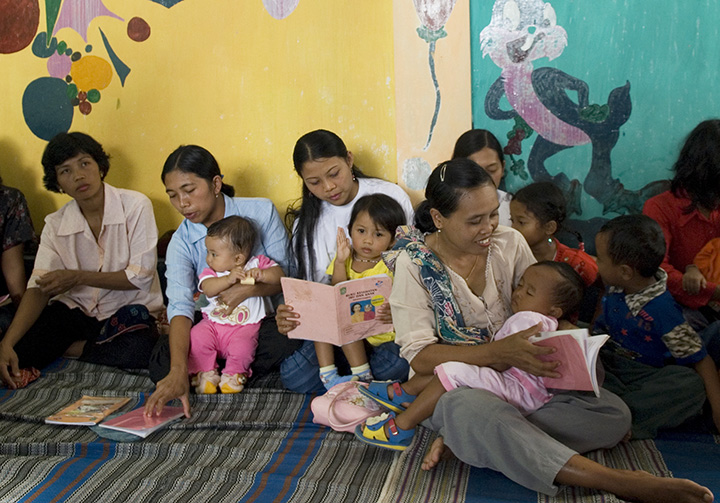
Mothers coming for a health check-up with their handbooks. (Photo: JICA/Imamura Kenshiro)
Osaki: The challenges were almost the same for JICA. For example, the fragmentation of the programs. It meant there needed to be some political decision and the ministerial decree to integrate the former fragmented system into one—the MCH Handbook—was a huge step. Still, we need to follow up, for sustainability, and how we can locate the handbook in the health system is another big, big task. So JICA supported the Ministry of Health in many ways to ensure their ability to sustain the program after the conclusion of JICA’s assistance. These included creating model activities to promote use of the handbook, such as motherhood classes; strengthening the education of healthcare workers by including the MCH Handbook in school curricula; and advocating for the use of handbooks to local governments and private practitioners.
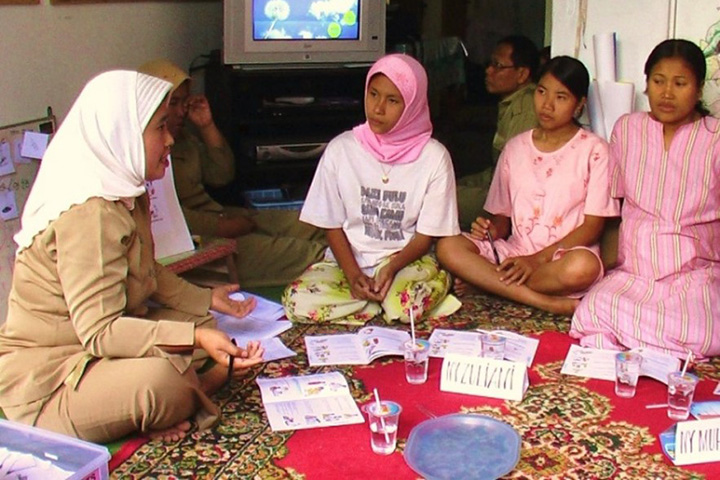
A motherhood class utilizing the MCH Handbook, held in cooperation with JICA.
—The Indonesian Ministry of Health has actively conducted international training programs in collaboration with JICA recently; why is this?
Pritasari
: We had implemented the program nationwide and also had some experience participating in international training in Japan, invited by JICA. During the training, we had opportunities to interact with health managers from other countries and realized that we had useful experience to share. So we started conducting international training with JICA’s technical assistance and support in 2007. This was a very good experience for our national program managers because they could share internationally how they started to implement the MCH Handbook and at the same time gain valuable hints to enhance their system.
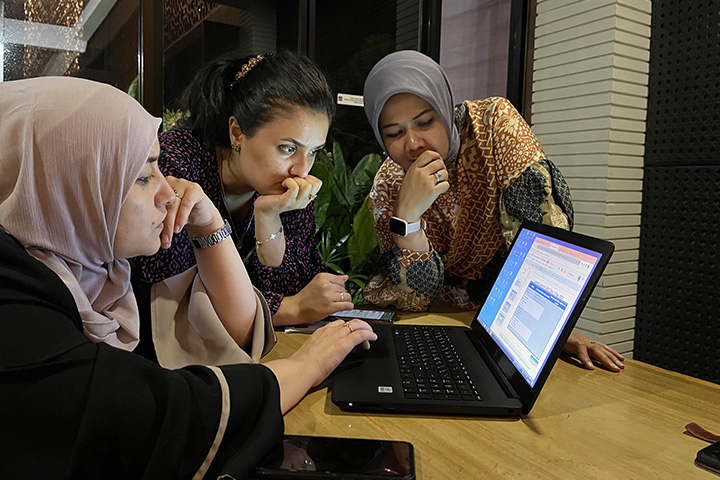
Participants in an international training program sharing their experiences and knowledge with each other.
So far, Indonesia has conducted training 15 times, with 17 countries and regions. Not only Southeast Asian countries but also Palestine, Afghanistan, Tajikistan, Uganda, Cameroon, Morocco, Madagascar, and Kenya. Themes of the international training have included how to use the handbook after disasters such as earthquakes, and how we used it when Indonesia launched its national health insurance system. Some countries have decentralized systems like Indonesia but others have fairly centralized government policies. So this gives us another perspective. We didn’t adopt all the same policies as Japan, and other countries can’t adopt directly from the Indonesian experience.
Osaki: Personally, I’m very happy to witness the interaction across the different continents; Asian countries and African countries learning from each other. The Indonesian participants say they are happy to be questioned by people from outside because it helps them understand what they are doing and what they are missing.
The trend of international training led to the WHO’s development of international guidelines for home-based records for maternal and child health in 2018. Dr. Kirana was one of the members of the WHO guidelines development group. The guidelines help with understanding the value of health records, including the MCH Handbook. Internationally, there are a dozen programs serving mothers and children: for maternal health, for newborn health, for delivery, for immunization, and for nutrition; it’s so fragmented. The international community has some responsibility to be united, and the guidelines compiled by the WHO can be useful here. They can also help countries that seek to use the MCH Handbook more effectively in their health system.
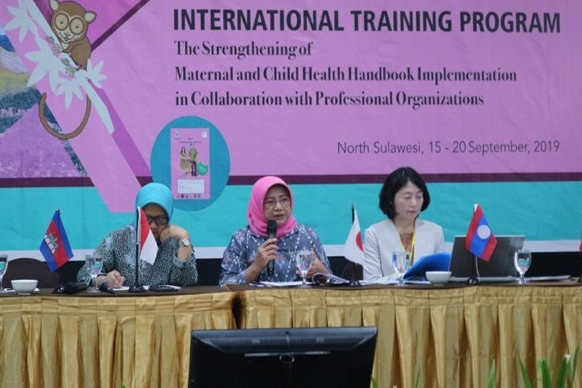
Dr. Pritasari and Osaki at an international training program.
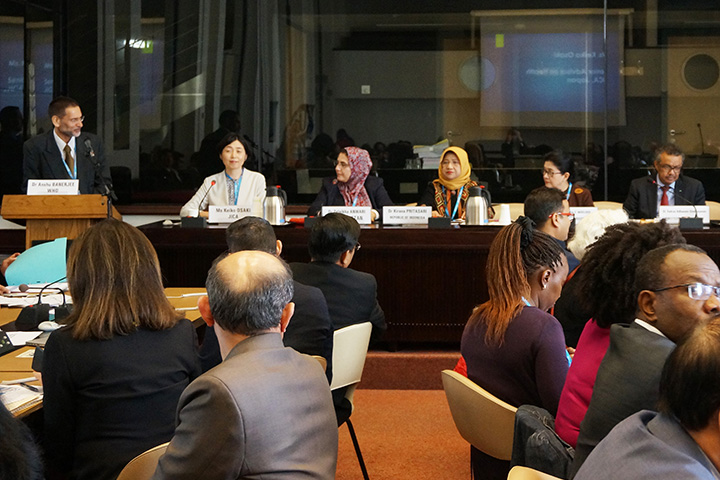
An official side event of the annual WHO meeting on home-based records for mothers and children.
—How do you evaluate the results of the 30 years of cooperation and what are your expectations for the future?
Pritasari: In order to evaluate the progress and results of implementation, we collaborated with a local university to compare areas where the intervention had been implemented and those where it hadn’t. Where the handbook was in use, compliance with health checks during pregnancy was almost twice as good, full immunization rates of children were also higher, and overall access to services across the continuum of health care for mother and child was improved. But the challenge is to make sure the information reaches every new pregnant mother and also each new generation of health personnel.
Osaki: For Indonesia, the MCH Handbook still has further potential to benefit mothers and children. Currently, JICA is supporting a project for more effective use of the handbook for better health systems. For example, if a baby is born early or has a low birthweight, they may need a little bit of additional support along with the MCH Handbook. Also, the six-month checkup is now being developed as a model for nurturing care for early childhood development by using the MCH Handbook. I hope Indonesia will continue to use the handbook as a platform for the health system and to address the shifting MCH agenda.
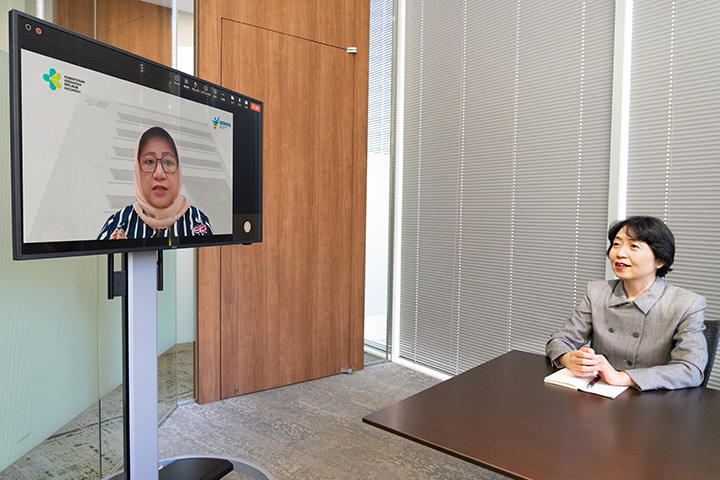
Pritasari: Another challenge is disruption by technology. Because Indonesia has a very high rate of mobile phone utilization, the tendency will be for all information to be digital and to come through our phones because it will make it efficient. But one of the important things with the handbooks is the communication between mothers and the health personnel. So, if we only rely on this digital instrument then there will be less interaction between the mother and the worker. We still need this interaction to ensure the received information is understood by mothers.
Osaki: I agree. Digital is another opportunity for us, but we found it’s very difficult to just switch from paper to digital. Maybe the best answer is to have a mix of them. How to make it efficient, how to make it effective, and how to make it interactive and sustainable; we are still searching for the answers. I appreciate that we are a partner of Indonesia in creating this common agenda for all, not only for Japan and Indonesia, but for every country that would like to learn from each other.
Indonesia has already shown leadership to other countries and regions including Afghanistan and Palestine. And we anticipate that JICA will keep being a good partner with Indonesia for the next generation. That’s my hope.
scroll